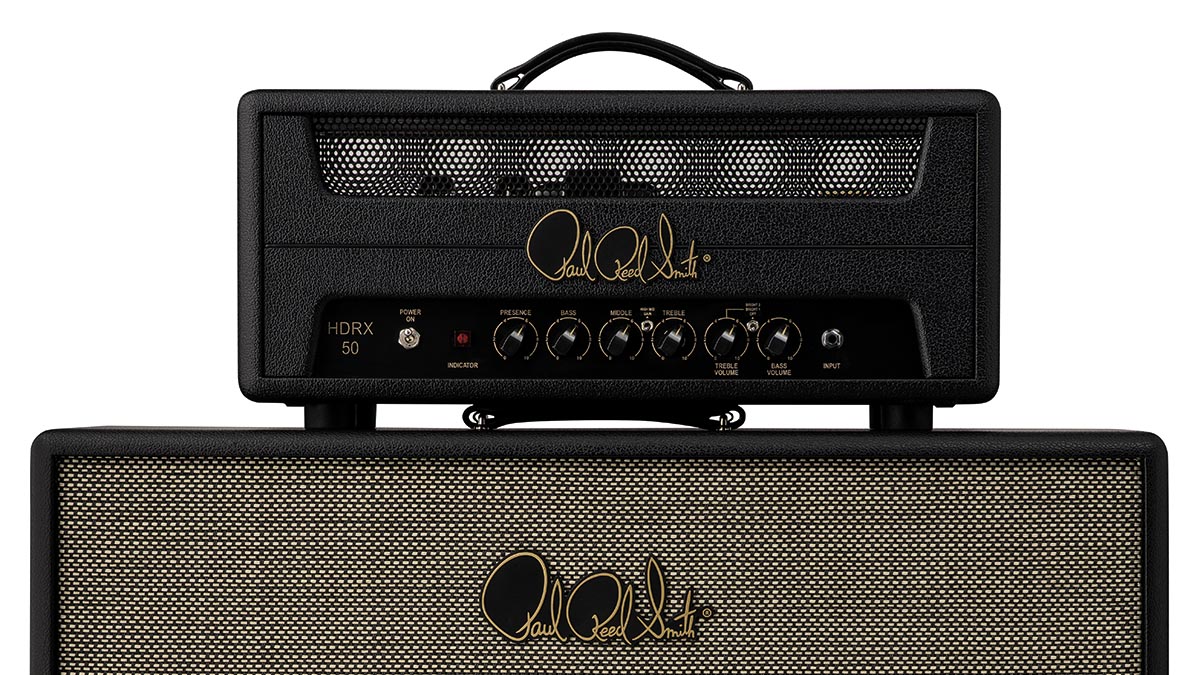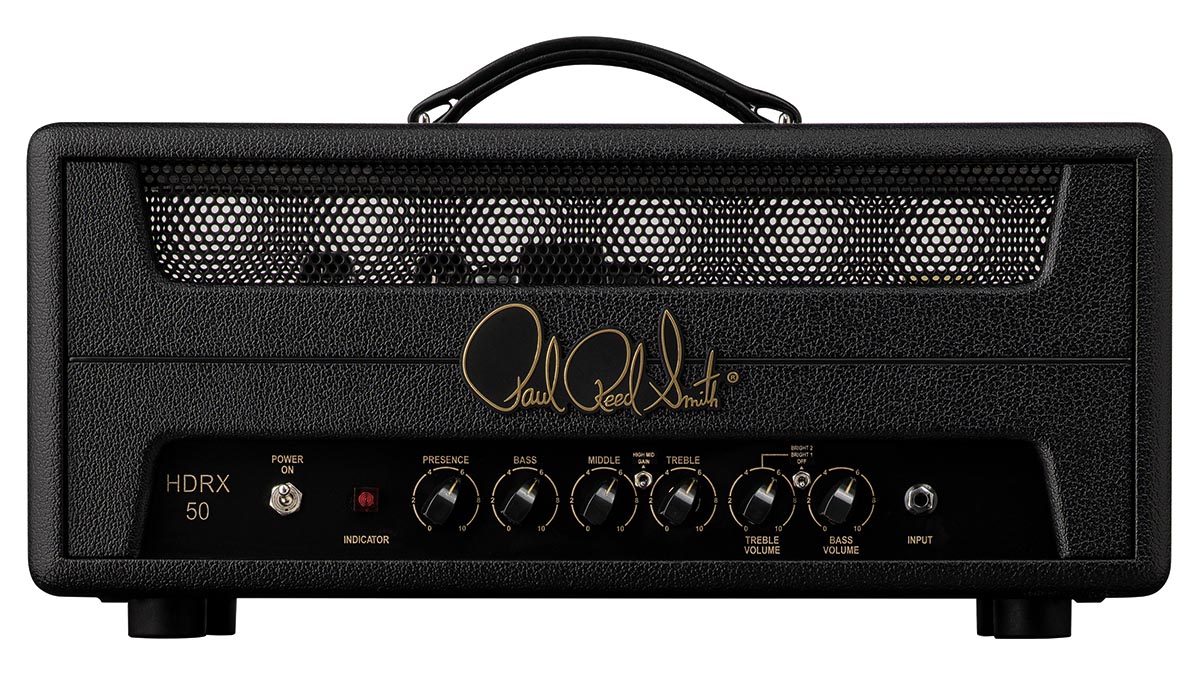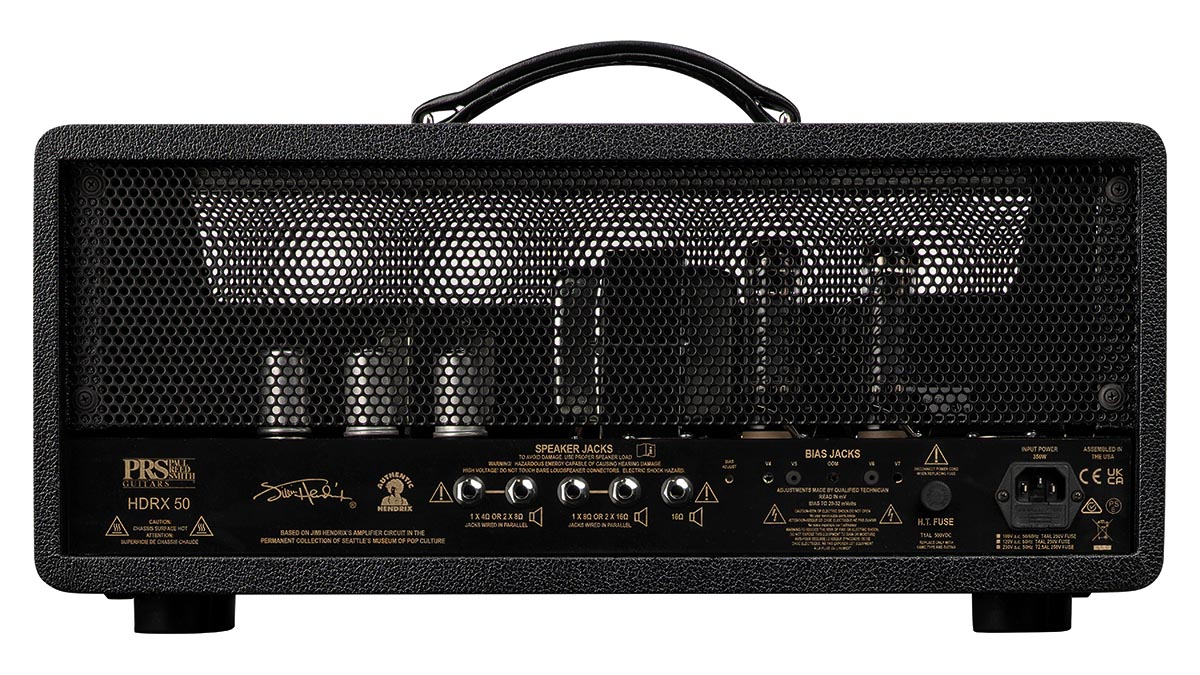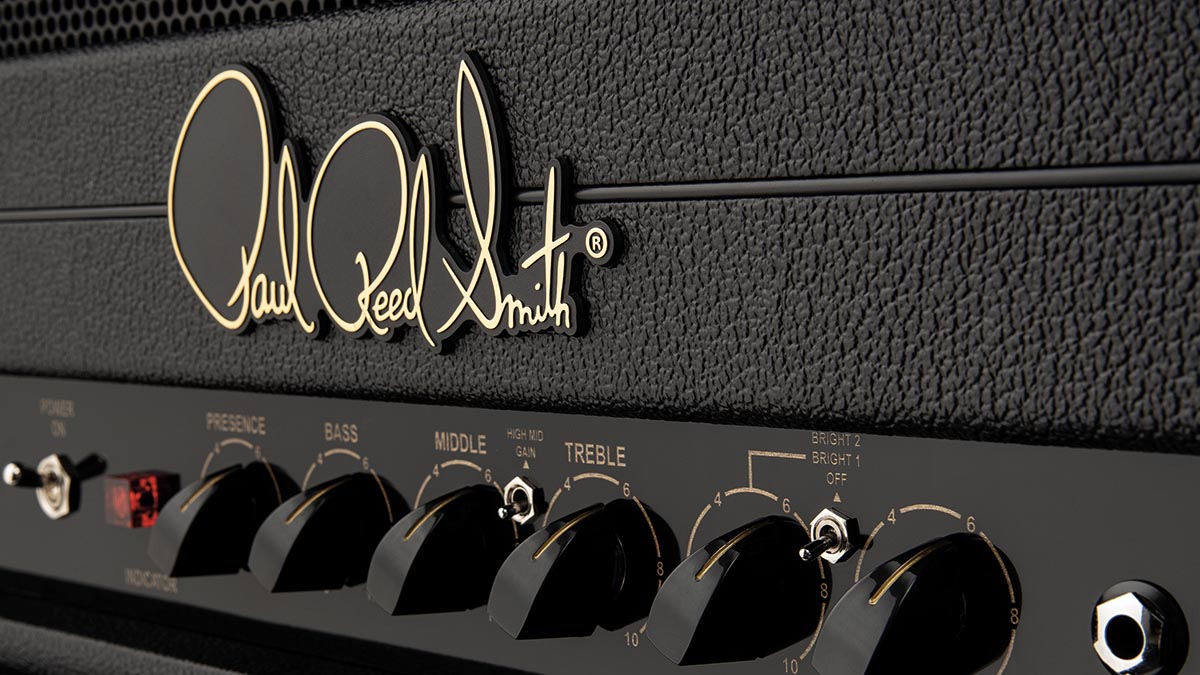Guitar World Verdict
The HDRX 50 truly delivers some of the most desirable amplifier tones of all time while offering guitarists an even wider tonal palette than the original it is based upon.
Pros
- +
It's loud.
- +
Blendable Treble and Bass channels.
- +
High-mid boost switch puts extra oomph into solos.
- +
No effects loop but excellent performance with pedals.
Cons
- -
It's loud.
You can trust Guitar World
For a considerable majority of electric guitarists, one of their top three holy grail/bucket list guitar amps is a Marshall JMP 100- or 50-watt plexi head from the late '60s. Some of the most beloved performances of all time by players that include Jimi Hendrix and Eddie Van Halen were recorded using Super Lead amps from this era.
These days Marshall JMP Model 1959 100-watt Super Lead heads in original, unmodified condition can cost nearly $10,000 (or more, if you can even find one), while the 50-watt JMP Model 1987 cost only a little less.
Fortunately, PRS recently introduced its new HDRX series amps, which are based upon one of Jimi Hendrix’s personal amps that he allegedly played at Woodstock. Hendrix’s amp features a special “touring circuit” modification that is replicated here, and new features like a high-mid gain boost make the HDRX amps much more than a knockoff or replica.
While the PRS HDRX amps deliver the beloved classic tones that guitarists know very well, it is more versatile and high-performance than its original inspiration, which should make them bucket list amps in their own right.

Features
We looked at the 50-watt HDRX 50 head, which shares the same features as its 100-watt counterpart but delivers lower (i.e. more manageable) output power. Like a classic late-'60s amp, the control panel is very straightforward, providing Presence, Bass, Middle, Treble, Treble Volume and Bass Volume controls (no master volume) and high-mid gain boost and three-way bright (off, bright 1, bright 2) switches.
Designers Paul Reed Smith and Doug Sewell were given the Hendrix estate’s full blessing to thoroughly examine one of Jimi’s amps in 2018 and use it as the foundation for the HDRX design
There is just a single ¼-inch input jack, but the treble and bass channels are internally linked so both channels can be combined without using a jumper cable.
The rear panel is similarly simple, featuring just five speaker output jacks (pairs of 4- and 8-ohm jacks plus a single 16-ohm output) and a bias adjustment section (note that just like a classic amp, there is no effects loop).
Here you’ll also find the “Authentic Hendrix” stamp of approval as designers Paul Reed Smith and Doug Sewell were given the Hendrix estate’s full blessing to thoroughly examine one of Jimi’s amps in 2018 and use it as the foundation for the HDRX design.

The HDRX 50 is powered by a pair of New Sensor EL34EH power amp tubes and three JJ ECC803S preamp tubes. High quality components are used throughout, including custom-made British-style Straight Edge transformers.
The HDRX 50 even mimics 100-watt power supply circuitry while still using its own custom 50-watt transformer, making it much closer in output and tonal character to a full 100-watt head. PRS also offers 2x12 and 4x12 cabinets with modified Celestion G12H-75 Creamback speakers designed to enhance and complement the HDRX’s signature characteristics and performance.

Performance
I played the HDRX 50 through various 16-ohm 4x12 cabinets and an 8-ohm HDRX 2x12. The head sounded great through each cabinet, but the 2x12 had an edge over the others thanks to its sweeter overdrive warmth and smoother treble peaks.
Unlike an aged vintage Marshall, the HDRX 50 delivers a fierce, nearly instantaneous attack that reminds me of an aggressive Hiwatt. However, the midrange body is much fuller and voluptuous and the bass is impressively massive when dialed at six or above.
On its own, the Treble channel can be quite bright, but fortunately the tone never becomes overly harsh or too piercing. Instead, strings shimmer like they were made of glass, with the lowest strings packing an impressive chest-thumping punch. The Bass channel is darker and warmer, yet it delivers outstanding clarity and definition.
Combining the two delivers a vast rainbow of tones and textures. Tweaking the balance between the two is like blending two incredibly great amps and deciding which one to emphasize or balance. Whereas many classic Marshalls sound great with a Strat and just good with a Les Paul or vice versa, the HDRX 50 can be tweaked to perfectly complement any guitar plugged into it, from a twangy Tele to a high-output super Strat or hollowbody jazz box.
The HDRX 50 is outrageously loud and, like any good non-master volume amp, needs to be cranked up to sound its best. Surprisingly, it’s virtually noise-free, which makes it an excellent tool for the studio as well as pristine-sounding live performances. The amp can go from raunchy distortion to pristine clean instantly by adjusting playing dynamics or backing down the volume control, delivering dazzling responsive performances.
Specs
- PRICE: $2,900 / £2,799 (HDRX 50 head); $899 / £659 (HDRX 2x12 cabinet)
- TYPE: Tube amp head
- POWER: 50-watt
- CHANNELS: 2
- CONTROLS: Channel 1 controls – Bass Volume w/ Presence, Bass, Middle, Mid Gain switch, Treble, Lead Volume, Bright switch (Off, Bright 1, Bright 2); Channel 2 controls – Volume w/ Presence, Bass, Middle, Mid Gain switch, Treble, Lead Volume, Bright switch (Off, Bright 1, Bright 2)
- VALVES: 3x JJ ECC803S (preamp), 2x New Sensor EL34EH (power tubes)
- DIMENSIONS: 21.5" (W) x 10" (H) x 10" (D)
- WEIGHT: 34.4 lbs
- CONTACT: PRS Guitars
Chris is the co-author of Eruption - Conversations with Eddie Van Halen. He is a 40-year music industry veteran who started at Boardwalk Entertainment (Joan Jett, Night Ranger) and Roland US before becoming a guitar journalist in 1991. He has interviewed more than 600 artists, written more than 1,400 product reviews and contributed to Jeff Beck’s Beck 01: Hot Rods and Rock & Roll and Eric Clapton’s Six String Stories.
“The world’s most convenient all-tube amp head”: Steve Vai-backed firm Synergy has unveiled a tiny amp head that lets you swap in tones from some of the world’s biggest amp builders
“Modified connects us with a long-standing tradition of modifying Marshall amps that dates back to the 1970s”: Marshall unveils factory modded takes on the 1959 Plexi and JCM800 – tipping its cap to the amp wizards of rock’s golden era












